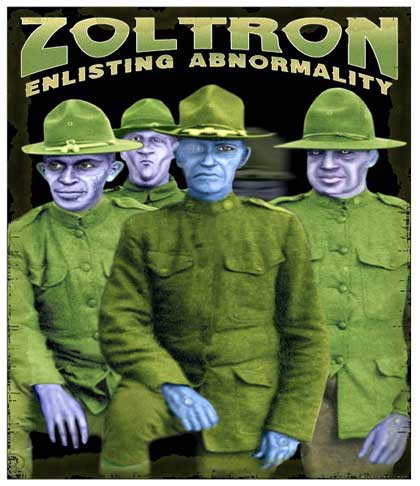Inspiration
Friday
Byroglyphics
I just rediscovered Russ Mills' portfolio website the other day. This guy has some seriously cool work that inspires me personally. Currently he is doing a series where he combines illustrated faces with abstract brush strokes and shapes inspired by the human form and animals. If I remember correctly, all of the paint strokes in his work were actually created with a computer and drawing pad. His gallery link is in the bottom left corner - it's worth looking at.
For Today - Breaker Album Art
A band I listen to released an album recently with an interesting piece of artwork on it's cover. I questioned it's meaning, and received a more than helpful description from the band themselves via their blog. Here's the description for the piece above, written by singer Mattie Montgomery:
"For those of you who are interested in digging a little deeper into the meaning/symbolism of our album cover, I have put together a quick explanation of everything on it. Here we go:
--The 6 wings covered in eyes in the picture represent 4 creatures that fly around the throne of God day and night, called "Seraphim", or “Burning Ones” (Isaiah 6, Ezekiel 1, Revelation 4) These creatures are angelic beings whose entire commission it is to simply be near God--this leads, naturally, to the breaking-forth of praises.
--The 4 larger, individual symbols inside the circle are the Hebrew letters, “YHWH”. This is the scriptural name of God. The writers of scripture, out of reverence for the holy name of God, refused to write out His whole name. Therefore, they only included the consonants. So what we know about the name of God is that it contains the consonants “YHWH”. This is where we get the name “Yahweh” from, although it is also sometimes translated as “Jehovah”, as the letters “y” and “j” are interchangeable in the Hebrew alphabet, as well as the letters “v” and “w”.
At the top of the circle is the Star of David. The foretold Messiah was prophesied as being a descendant of David (Isaiah 11:10-11). Jesus, being this Messiah, is of the bloodline of David and has/will be called a “son of David” forever. Therefore, the use of the Star of David on our album art is a reference to fulfilled prophecy surrounding Jesus and His divinity/godhood.
--In the top, left-hand corner of the circle is the name "Michael", written in Hebrew. Michael is an archangel (Jude 1:9) called “The great prince who stands watch over your people” (Daniel 12), and spoken of as a commander or a general of an army of angels in Revelation 12. He is a warrior angel who has been commissioned to defend both the throne of God and the image-bearers of God--humans.
--In the top, right-hand part of the circle, the name Gabriel is written in Hebrew. Gabriel is a messenger angel. He is recorded as interpreting Daniel’s visions in Daniel 8:16-26, and 9:20-27, as well as announcing the births of John (Luke 1:11-20) and Jesus (Luke 1:26-38).
-On the bottom, left-hand part of the circle, the name Raphael is written in Hebrew. The name Raphael means “God heals” or, “God, please heal”. In John 5, there is a pool at a place called Bethesda where many sick people had gathered because “an angel of the Lord descended at certain times into the pond; and the water was moved. And he that went down first into the pond after the motion of the water was made whole of whatsoever infirmity he lay under.” Because of Raphael’s name and role, this event is believed to be the assignment of Raphael.
--On the bottom, right hand part of the circle, the name Uriel is written in Hebrew. Uriel is written about in only extra-canonical books, but his name means “God is light”, or “The light of God”. And is consistently referred to as the 4th archangel, standing along-side Michael, Gabriel, and Raphael.
,,In regards to the man portrayed on the inside of the album’s liner notes, here are a few notes about him:
He is the “Breaker”. The personification of a role that is filled by God, as well as people operating under the commission of God. The breaker concept is one that dictates (very simply), “What was once broken is now used to bring breakthrough.” That is why the Breaker has been torn apart, and then stitched back together. He is also holding the chains of the delivered in his hands--chains that have been broken off and taken away. His belt buckle has an ancient Latin symbol meaning “Jesus Christ conquers”, or “Jesus Christ is victorious”. And, on His chest is carved “Baal Perazim”. This comes from a biblical story recorded in both 2 Samuel 5 and 1 Chronicles 14. The phrase “Baal Perazim” means “The God who breaks through”, and David, as he gave the name to the place of his victory said, “As waters break out, the LORD has broken out against my enemies before me.” (2 Samuel 5:20) The passage goes on to say “The Philistines abandoned their idols there.
The Breaker represents God’s victory, both in regions and individuals. Baal Perazim is the place in which God breaks through, and people abandon their idols. "
I think it's awesome that they organized a lot of research and went such great lengths to design the symbol above. I feel like a lot of album artwork is pointless and an afterthought for most bands, and in this day and age taking pride in your albums artwork means a lot when it comes to CD sales since downloading music is a lot more popular. It gives a lot more value to the hard copy.
Source - http://www.myspace.com/fortoday/blog/539506279
Thursday
Zoltron
Here's another website for a design company called "Zoltron". They do a lot of illustration and web design, as well as poster and CD artwork for some well known bands. I like how their style has range to it. I'm not much of a fan of designer/design company websites that only show off a specific style. While Zoltron's style is apparent, it doesn't seem to be a limitation to their client's finished designs.
Friday
Animal Planet
I was going to write a long, drawn out post about how much I hate this logo, but I think it speaks for itself. I remember when I first saw it a few years back and was trying to tell my mom how terrible it was. She didn't understand why.
David Carson
For my distinguished designer project, I'm focusing on David Carson. I wanted to bring attention to his personal website design, and how it goes against the grain of modern websites (and websites I would think to be visually pleasing).
The first page is organized into vertical column of his work and emails he's received in random order. Once you click the link to enter the site, you more or less get the same type of page. Once you click the second link to enter the site, you get another similar page, but longer. Then you can finally access other links you would typically find on an artist's site.
At first, I was kind of confused with the design, but then I realized how perfectly it fits my artist of choice. He revolutionized how people think about type and advertising, taking away the "clean" look of things and using dirty, grungy type in an organized fashion. His website is a reflection of that.
I came to appreciate it's design as it shows a little slice of his life in a simple, unembellished way, by altering his works with emails he's received over the years. It's almost as if you are looking at it through his eyes, or at least that's how I interpreted it.
I also think it's kind of funny how he ends all of his emails with different names.
Thursday
Paul Neave
This is a pretty cool website that I found a while ago but just remembered now. It's not really a portfolio site, but an "interactive playground", as Paul Neave, the creator, calls it.
There's a bunch of neat flash mini games that range from orbs that bounce to your iTunes music and a flash dandelion that reacts like a real dandelion when you blow on your computer's microphone.
If anything, it'll keep you occupied when there is nothing else to do.

Here's another nice website from an award winning freelance web designer. Simple and to the point. Check out his portfolio work, very impressive.
Subscribe to:
Posts (Atom)





